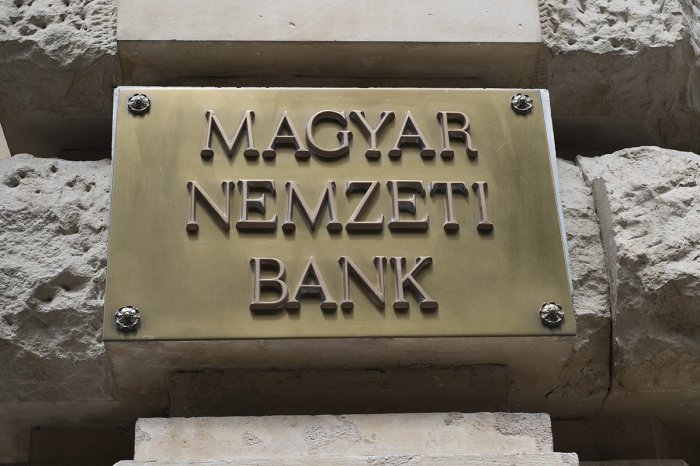MNB includes Eximbank in state debt calculations

Image by Jessica Fejos
Hungaryʼs state debt, calculated according to Maastricht rules, stood at 72.1% of GDP at the end of December 2017, down from 72.5% of GDP at the end of September, the National Bank of Hungary (MNB) said on Monday regarding Hungaryʼs preliminary financial accounts.
Hungaryʼs Constitution requires year-end state debt relative to GDP to fall every year until it reaches 50%, noted state news wire MTI.
For the first time, the MNB presented a separate state debt ratio that includes the balance sheet of Magyar Eximbank, in line with a decision by Eurostat, the EUʼs statistics office. Eurostat has for years maintained that Magyar Eximbank should be reclassified inside the general government sector, which would raise state debt.
The MNB said the ratio including the assets of Magyar Eximbank was "supplementary," but would serve as the "main indicator" of Hungaryʼs reported Maastricht state debt. It added, however, that the inclusion of the lender in the data would "not significantly modify" the net financial worth or net liabilities of the general government.
Adding Eximbankʼs debt to the state debt, Maastricht debt was 1.9 percentage points higher, at 74%, than the debt calculated on the basis of financial accounts. Even so, this debt ratio was still down from 74.5% at the end of Q3, MTI reported.
In a separate statement, the Central Statistical Office (KSH) said it maintains its stand that the inclusion of Magyar Eximbank in the general government "does not serve the accurate presentation of financial trends and is not in line with the methodology on which national accounts are based." Even so, KSH acknowledged Eurostatʼs decision on the matter and said it would calculate state debt with Eximbank for Excessive Deficit Procedure (EDP) reporting. Eurostat and the KSH will release preliminary 2017 EDP data on April 23.
In nominal terms, the state debt of 72.1% of GDP was equivalent to HUF 27.359 trillion at the end of Q4, up from HUF 26.969 tln at the end of Q3. Net borrowing increased the nominal figure by HUF 338 billion, and revaluations by HUF 52 bln in the fourth quarter.
State debt rose from the end of 2016 to the end of 2017 as a balance of net borrowing of HUF 1.187 tln, which was unmodified by FX exchange rate fluctuations as they balanced out over the four quarters. Net liabilities of the general government amounted to HUF 24.127 tln, or 63.5% of GDP, at the end of Q4 2017.
The net financing requirement of the general government, which MTI noted is a good approximation of the general government deficit, was HUF 722 bln, or 1.9% of GDP, in the four quarters to the end of Q4. The general government had a net financing requirement of HUF 949 bln in Q3 2017.
In Q4 alone, net borrowing, calculated from the financing side, was HUF 648 bln, or 6.2% of quarterly GDP. In Q3, net borrowing was HUF 295 bln, or 3.1% of quarterly GDP.
On the assets side, there was a sharp decline in deposits with the central bank. The stock of loans of the central government rose by the end of the year, while there was a sharp increase within other financial assets.
On the liabilities side, local governmentsʼ deposits held with the central government rose sharply. The increase in the stock of issued securities continued. Households were the main lending sector, but non-money market funds and credit institutions also made significant purchases of Treasury bills and bonds, respectively.
Net borrowing of local governments was HUF 344 bln in Q4, while net borrowing of the social security funds was HUF 79 bln.
Net borrowing of households, at HUF 1.959 tln, was equivalent to 5.2% of GDP in the four quarters to Q4 2017. In Q4 alone, net borrowing stood at HUF 749 bln, equivalent to 7.1% of quarterly GDP.
Within householdsʼ financial assets, there was a significant increase in currency and current account deposits, short and long-term debt securities in the quarter. In terms of liabilities, there was a significant increase in the stocks of other liabilities. The increase was less intense in the stock of housing loans, while the stock of consumer and other loans declined.
SUPPORT THE BUDAPEST BUSINESS JOURNAL
Producing journalism that is worthy of the name is a costly business. For 27 years, the publishers, editors and reporters of the Budapest Business Journal have striven to bring you business news that works, information that you can trust, that is factual, accurate and presented without fear or favor.
Newspaper organizations across the globe have struggled to find a business model that allows them to continue to excel, without compromising their ability to perform. Most recently, some have experimented with the idea of involving their most important stakeholders, their readers.
We would like to offer that same opportunity to our readers. We would like to invite you to help us deliver the quality business journalism you require. Hit our Support the BBJ button and you can choose the how much and how often you send us your contributions.










